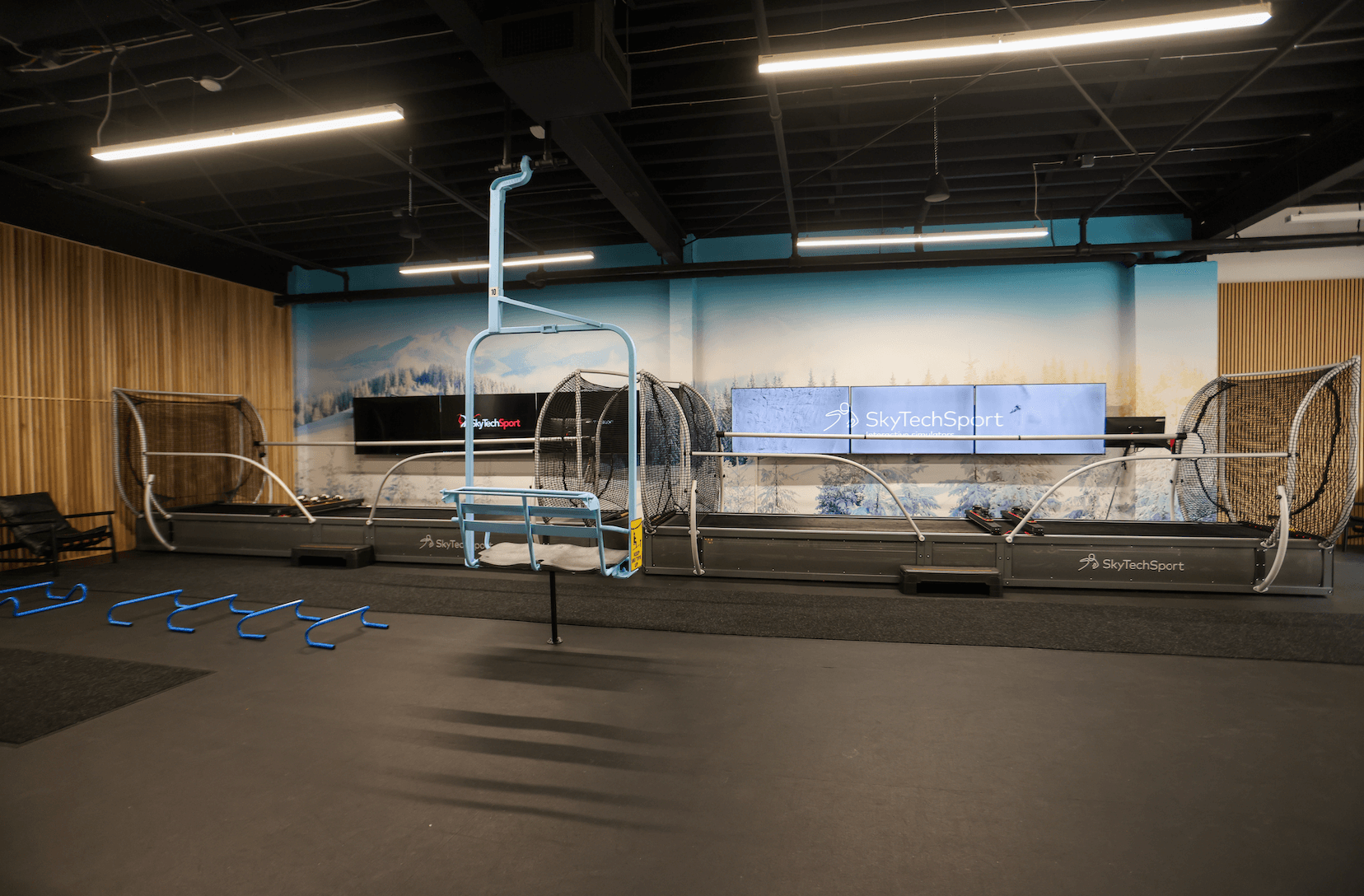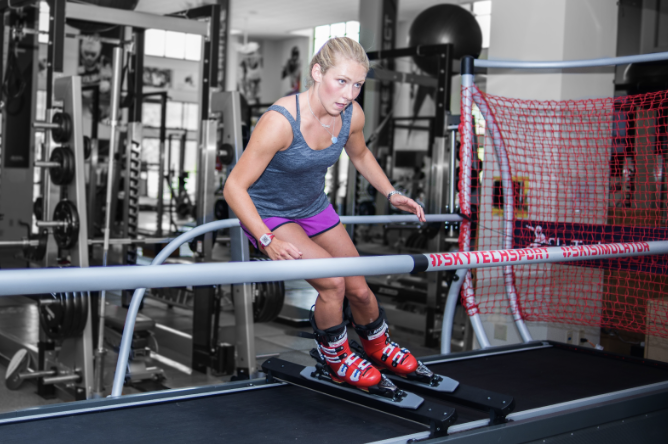
The U.S. Ski Team faces unique challenges in maintaining peak physical conditioning, testing, and rehabilitation for its athletes throughout the year. To address these challenges, the team integrated a SkyTechSport Ski Simulator into their state-of-the-art training facility in Park City, Utah. This advanced system allows athletes to replicate on-mountain skiing movements indoors, providing a critical tool for performance evaluation and recovery.
Competitive skiers require a combination of strength, balance, coordination, and endurance to perform at the highest level. Traditionally, these skills are honed during on-mountain training. However, environmental limitations, such as seasonal restrictions and unpredictable weather, often disrupt consistent practice. The U.S. Ski Team needed a solution to bridge these gaps, allowing year-round development of technical and physical skills.
Additionally, injuries are a frequent concern in alpine sports. The team required an innovative way to support rehabilitation, ensuring injured athletes could rebuild skiing-specific strength and technique without risking further harm.
The SkyTechSport Ski Simulator was installed in the U.S. Ski Team’s Park City training center to address these needs. The simulator replicates the feel of actual skiing by mimicking the forces and mechanics of alpine and freestyle skiing. Its features include:
Coaches and sports scientists at the facility designed tailored programs for both healthy and recovering athletes. The simulator’s integration into year-round testing regimens provides a controlled environment for assessing progress and fine-tuning skills.
Improved Technique Mastery: Continuous feedback during training sessions allows athletes to refine their techniques, contributing to stronger performances on the slopes.
The U.S. Ski Team's use of the SkyTechSport Ski Simulator highlights its value as a versatile training tool. By integrating advanced technology into their training protocols, the team has addressed critical challenges in conditioning, testing, and rehabilitation, ensuring their athletes remain competitive on the world stage.
This case illustrates the simulator’s potential for other elite teams and training facilities looking to optimize performance year-round.
